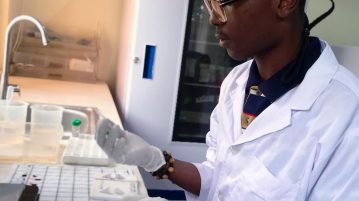Every year in the first week of August, World breastfeeding week is a worldwide celebration in over 120 countries first commemorated in 1990 by policymakers, WHO and UNICEF to promote and support breastfeeding. The theme this year is Step up for breastfeeding: educate and support.
World breastfeeding week also aims to underline the benefits of breastfeeding to both maternal and baby health as well as promoting, safeguarding and supporting women’s rights to breastfeed anywhere and at any given time.
The sustainable development goals (SDGs) adopted by the UN in 2015 is an universal call to action to end poverty, protect the planet, and ensure that by 2030 all people enjoy peace and prosperity. Breastfeeding is a central part of the 2030 agenda and is linked to and can help achieve many SDGs. The following highlights the 17 sustainable development goals and how breastfeeding helps to achieve them:
SDG 1: End poverty in all forms and everywhere
Breastfeeding is a natural and cost-effective way of feeding for newborns and infants. It is inexpensive and does not exert a toll on family budgets when compared to formula feeding. Breastfeeding does contribute to the reduction of poverty.
SDG 2: End hunger, achieve food security and improved nutrition and promote sustainable agriculture
Exclusive breastfeeding for six months and supplementary and continuous breastfeeding up to 2 years of age provides adequate nutrients and energy and prevents hunger, under-nutrition and obesity and thus providing food security for infants and children.
SDG 3: Ensure healthy lives and promote well-being for all at all ages
Breastfeeding markedly improves the health, development and survival of infants as it improves IQ and provides antibodies for the developing infant. It as well contributes to the health of mothers.
SDG 4: Ensure inclusive and equitable quality education and promote lifelong learning opportunities
Breastfeeding is a crucial element of comprehensive early childhood development and care as it is associated with improved IQ and greater cognitive ability leading to better outcomes in education.
SDG 5: Achieve gender equality and empower all women and girls
Only 40.6% of employed women all over the world have a statutory right to maternity leave. Work is one of the leading challenges to exclusive breastfeeding and it is a significant factor in women’s decision to stop breastfeeding early. Breastfeeding can empower women with autonomy as it is linked to birth spacing and the whole experience is satisfying for mothers.
SDG 6: Ensure availability and sustainable management of water and sanitation for all
Formula feeding requires access to clean water, hygiene and sanitation. Exclusive breastfeeding and on demand however, provides all the water a baby needs.
SDG 7: Ensure access to affordable, reliable, sustainable and modern energy for all
Breastfeeding requires less energy when compared to production of formula in industries.
SDG 8: Promote sustained, inclusive and sustainable economic growth, full and productive employment and decent work for all
Interventions such as maternity leave, support at work can lead to an increase in overall breastfeeding rates and increase productivity and loyalty among women. These maternity protection and policies help women to combine breastfeeding and their other work.
SDG 9: Build resilient infrastructure, promote inclusive and sustainable industrialization and foster innovation
Breastfeeding helps to foster innovations like workplace crèches, lactation rooms and it helps to navigate the challenges of time and space that comes with industrialization and urbanization.
SDG 10: Reduce inequality within and among countries
Breastfeeding needs to be promoted, safeguarded and supported among all, especially in low income and vulnerable groups as this will help to reduce inequalities.
SDG 11: Make cities and human settlements inclusive, resilient and sustainable
Breastfeeding mothers and infants need to feel safe and welcome in all public spaces especially in the big cities.
SDG 12: Ensure sustainable consumption and production patterns
Breastfeeding provides a healthy, viable, non-resource intensive, sustainable and natural source of nutrition and sustenance.
SDG 13: Take urgent action to combat climate change and its impacts
Breastfeeding protects infant health and nutrition in weather-related disasters due to global warming.
SDG 14: Conserve and sustainably use the oceans, seas and marine resources for sustainable developments
Formula production and distribution leads to production of more waste that can cause sea pollution and affect marine life as opposed to breastfeeding which does not.
SDG 15: Protect, restore and promote sustainable use of terrestrial ecosystems, sustainably manage forests, combat desertification, and halt and reverse land degradation and halt biodiversity loss
Formula feeding employs dairy farming which puts pressure on natural resources and contributes to carbon emissions and climate change.
SDG 16: Promote peaceful and inclusive societies for sustainable development, provide access to justice for all and build effective, accountable and inclusive institutions at all levels
Breastfeeding is enshrined in many human rights structures and conventions. National laws and policies to protect and support lactating mothers and infants are necessary to ensure that their rights are upheld.
SDG 17: Strengthen the means of implementation and revitalize the global partnership for sustainable development
The Global Strategy for Infant and Young Child Feeding (GSIYCF) fosters multi-sectoral collaboration and can build upon a myriad of partnerships and development support through breastfeeding programs and initiatives.
About Author:
Dr. Orimoloye P. O. is a Medical Officer, passionate about his profession and Public Health while enjoying the good life.



